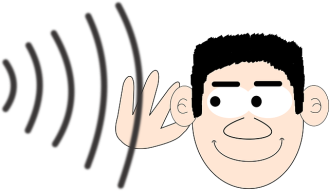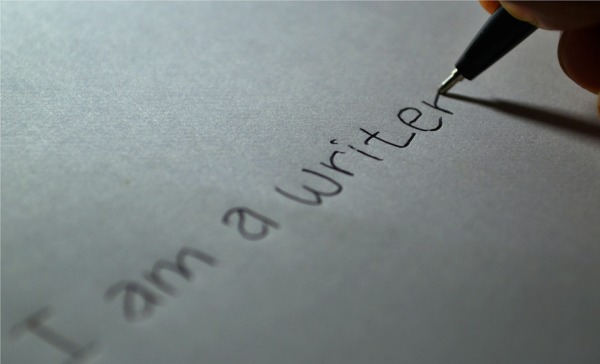Become an Excellent Listener and Get Positive Results!
Pardon, what did you say?
Listening is not simply hearing.
I am sure that you have experienced many times when you “heard” something, but you did not pay attention to it and have no idea what the person said to you.
Of course, we can’t pay close attention to everything we hear each day, or we would go crazy. We need to sort the important from the unimportant. We need to “weed out” those bits of information that aren’t going to help us.
When you are studying, however, you can learn certain tactics to help you get into the zone so that you don’t miss the bits you really need.
You can train yourself to be a better listener.
Be Attentive
Sit up straight and look alive! Don’t just “look” alive, but be alive. Sometimes it takes a little effort to engage yourself in a particular topic or to listen to a speaker that does not automatically entertain, but you can train yourself to do better.
I know in today’s world that everyone wants splashes of colour, musical backgrounds, dancing ponies, and so on in order to learn; however, not only are these not necessary – they are often more distractions to learning than helpful additions.
Okay, I might be exaggerating a bit, especially with the dancing ponies, but you get my point. Not every teacher, not every class, not every book, has to “force” you by being entertaining ad nauseam to get you to learn. The learning is actually your job!
Oh my God! He said it. I have to DO something!
Yes.
Learning is up to you.
Not entirely, of course; but you are the main component. So, here comes another horribly shocking fact. If you don’t want to learn, you won’t. If you find a subject boring, then that is your fault. You need to do something about it.
Go into every class and every course with the attitude that you are going to get the most out of it.
You are going to be alive!
Make Eye Contact
If you are listening to a teacher, or even a student’s presentation, always try to make eye contact. Your eyes are like a window, but they also reflect in some sense. You probably have experienced this yourself sometimes. You are talking to someone, and he or she keeps looking away or staring into space. When this happens, you get the distinct feeling that they are not particularly interested in what you are saying.
What happens then?
Well, you abbreviate what you are saying, or you simply stop. The speaker does not have any motivation or encouragement to keep going if the “listener” is not listening.
Social cues are very important. If you are not attending to the teacher, he or she will know! Trust me. It doesn’t matter how large the class is either. You might think you are “lost in the crowd,” but you are not.
Not only is it a courtesy to make eye contact and engage with the speaker, but you will learn a lot more.
Once the teacher knows you are not prepared to listen, your grade begins to fall. The teacher might not even be conscious of this effect, but it will happen.
Not only that; but, if the classroom is filled with many non-attentive students, the teacher will not be encouraged to give as much as she or he would in front of a more positive group of actual listeners
It’s human nature! We all need a little support to reach our best performance.
Help your teacher, and she or he will be able to help you even more!
(Note: Don’t stare, of course – but make frequent eye contact.)
Be Open
While you listen (and make eye contact), think of possible questions rather than interrupting with your opinions (at first). You want to give the speaker – whether that is a teacher, professor, other student, etc. – a chance to present all of his or her ideas and explanations before making too many judgements. Of course, you are always going to be thinking about what you agree with and what you don’t, and these thoughts can formulate your questions. But you want to remain open to new ideas, contradictory thoughts, opinions that you might automatically disregard under other circumstances but that could change depending on this presentation or argument.
Sit Near the Front
You will want to be able to hear the teacher / presenter.
You will have fewer heads bobbing in front of you and being distracting. (Or entirely blocking the view.)
The instructor will notice (note above) that you have come to learn.
It will be easier to make eye contact and focus on the lecture rather than other students, movements, windows, etc.
Remember, you want to be in control.
Listen for Verbal Cues and Watch for Non-Verbal Cues
There are lots of possible verbal and non-verbal cues, but here are a few.
Repetition – If a teacher is repeating a point several times, it is likely because he or she sees this as important. In other words, worth noting.
Slowing down – speaking very carefully. (Don’t forget this.)
Speaking more loudly. (I’m driving this point home to you.)
Literal verbal cues such as saying, “Here is the clincher!” or “This piece is important.”
Listen for the words in the following list:
Most importantly, therefore, to summarize, as a result, on the contrary, first of all, for these reasons.
All of these (and more) are key words or phrases that should make you perk up your ears!
If your teacher is writing on the board, listen (and take notes).
If your teacher is deliberately making eye contact with several students as she or he is making a point, this is probably important. Make sure you “zero-in” on what is being said.
If your teacher is gesturing dramatically (my grade 9 math teacher used to smash the chalk on the board whenever something very important was being delivered) – concentrate on what he or she is saying because these actions usually indicate important material.
There are always exceptions to the rule. A teacher might become suddenly passionate about something completely unrelated to your algebra or essay writing assignment; however, if you are paying attention to these verbal and non-verbal cues, then you can sort the salient data from the chaff as you hone in on what is being said.
Avoid Classmates Who Like to Distract
It will be very difficult for you to follow all the advice given above if the classmates that are near you keep fidgeting, whispering, passing notes, texting, showing you their latest YouTube video finds or funny Facebook pictures, etc.
Get away from them during class.
Enjoy their antics, their great personalities, their humour, and their judgments and comments for the lunch hour or after school. They could be the best friends ever outside of academics, but you need to take control when the learning is about to happen.
Remember that you have the power to take control of your learning. Using these tips will help you become an excellent listener and get positive results.
A personal educational coach can help you or your child achieve the best results.
I would love to be your coach.
Website: www.tutoringcentral.com
For more tips, check out this week’s video.
Listening Well

 she is so graceful.” (There are three separate subjects and predicates incorrectly joined.)
she is so graceful.” (There are three separate subjects and predicates incorrectly joined.)











 paragraph should be at the beginning of the paragraph – often the first sentence.
paragraph should be at the beginning of the paragraph – often the first sentence. made the case for your argument or point of view. This can be especially useful in argument paragraphs because it leads the reader to your conclusion drawing them in with your amazing proofs and supports.
made the case for your argument or point of view. This can be especially useful in argument paragraphs because it leads the reader to your conclusion drawing them in with your amazing proofs and supports.


 to keep doing a few questions long-hand as well. It uses the brain differently for basic skills. You will gain a much stronger understanding of “how” the math works. Of course there are complex calculations for which the calculator is required.
to keep doing a few questions long-hand as well. It uses the brain differently for basic skills. You will gain a much stronger understanding of “how” the math works. Of course there are complex calculations for which the calculator is required. 

 Catnaps are good, too, if they are brief. (Catnaps might be a misnomer. Don’t sleep like your cat for sixteen hours a day!) Make sure you eat healthy meals – small and numerous is best to keep your body (brain is included) performing at a steady rate. Don’t let yourself off the hook! Wait – I thought you said to be kind to yourself? Yes, sometimes kindness = toughness. You need to be honest with yourself – no cheating – no lapsing on scheduled homework time – no excuses. The reward you get later is the kindness component.
Catnaps are good, too, if they are brief. (Catnaps might be a misnomer. Don’t sleep like your cat for sixteen hours a day!) Make sure you eat healthy meals – small and numerous is best to keep your body (brain is included) performing at a steady rate. Don’t let yourself off the hook! Wait – I thought you said to be kind to yourself? Yes, sometimes kindness = toughness. You need to be honest with yourself – no cheating – no lapsing on scheduled homework time – no excuses. The reward you get later is the kindness component.
 You can’t make your in-person session? No problem, we can do an online session!
You can’t make your in-person session? No problem, we can do an online session!






 text – ask yourself questions (remember SQ3R – check that blog/video if not). Asking yourself questions keeps you looking for answers. When you are looking or listening for answers, you are engaged. (Don’t worry you don’t have to buy a ring or get married! It’s not that kind of engagement.)
text – ask yourself questions (remember SQ3R – check that blog/video if not). Asking yourself questions keeps you looking for answers. When you are looking or listening for answers, you are engaged. (Don’t worry you don’t have to buy a ring or get married! It’s not that kind of engagement.) your favourite tunes, or handstands – just focus.
your favourite tunes, or handstands – just focus.





